| Columns Retired Columns & Blogs |
I just picked up one of these HP's and it is astounding. Unbelievable how much I love it, and beautiful to just look at.
My review sample of the PrimaLuna DiaLogue Premium HP (a different one than that auditioned by Robert Deutsch) was fitted with EL34 output tubes—I made sure that the bias was correctly set for these tubes before performing any testing. After allowing the DiaLogue Premium HP to warm up for an hour or so, I used my Audio Precision SYS2722 system (see the January 2008 "As We See It" and www.ap.com) to examine its measured performance. With 4 and 8 ohm output-transformer taps and the choice of triode (green LED illuminated) or ultralinear (red LED) operation, the DiaLogue Premium HP is four amplifiers in one; I looked at all four output conditions.
The lowest maximum gain was in triode mode from the 4 ohm tap, at 33.55dB, with the 8 ohm tap 3.4dB higher. The maximum ultralinear gains were 35.7 and 37.1dB from the 4 and 8 ohm taps, respectively. The amplifier preserved absolute polarity (ie, was non-inverting) in all four output conditions. The input impedance was 32k ohms from 20Hz to 20kHz. This is usefully high, but still much lower than the specified 100k ohms.
The output impedance depended on frequency, the transformer tap, and the mode of operation. The lowest impedance was from the 4 ohm tap in triode mode, at 1.1 ohms from 20Hz to 1kHz, rising to 1.33 ohms at 20kHz. Ultralinear mode slightly increased both of these impedances, by 0.1 ohm, while the 8 ohm tap almost doubled them. Even so, these impedances are significantly lower than with other PrimaLuna amplifiers I have measured, and the modulation of the amplifier's frequency response by the interaction of its output impedance with that of the loudspeaker was relatively mild. It ranged from ±0.8dB from the 4 ohm tap in triode mode (fig.1, gray trace) to ±1.3dB from the 8 ohm tap in ultralinear mode. Note the peak between 30 and 50kHz in fig.1. This peak was at its highest from both taps into 8 ohms and higher impedances, but disappeared when the load impedance was well below the nominal transformer-tap value. But with the tap matched to the load, this peak was associated with a significant amount of overshoot on a 1kHz squarewave (fig.2), though a 10kHz squarewave revealed that the consequent ringing was critically damped (fig.3), the amplifier maintaining its stability. The flat tops and bottoms of these squarewaves correlate with the amplifier's extended low-frequency response; PrimaLuna's output transformers are of excellent quality.
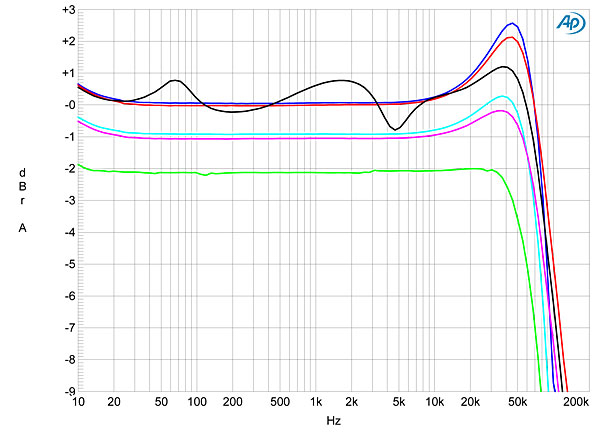

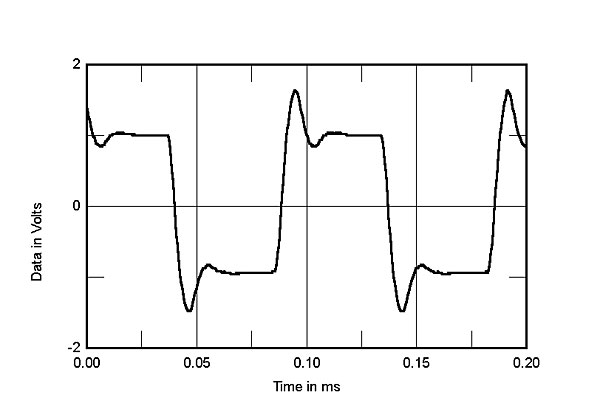
Fig.1 was taken with the volume control set to its maximum, and the channel balance is excellent. I repeated the response measurement with the volume control set to 12:00, equivalent to a gain reduction from the maximum of 17dB (not shown), and the channel balance remained within 0.25dB and the frequency response didn't change. The DiaLogue Premium obviously uses a high-quality part for its volume control.
Channel separation was adequate in both directions at and below 1kHz, at 70dB, but decreased to 44dB (L–R) and 49dB (R–L) at 20kHz. The wideband, unweighted signal/noise ratio in ultralinear mode, measured at the 8 ohm tap with the input shorted but the volume control set to its maximum, was okay: 68.6dB left and 69.6dB right. Triode mode improved these ratios by 3dB, and A-weighting improved them to 75.6dB left and 77.7dB right. Spectral analysis of the noise floor (fig.4) indicated a small level of 60Hz hum in both channels, due to magnetic interference from the AC transformer, but a slightly higher level of 120Hz in the left channel, at around –78dB (0.02%). This is actually good noise performance for a transformer-coupled tube design.

Figs. 5–8 show how the THD+noise percentage in the PrimaLuna's output varied with power with both channels driven from the 4 ohm tap into 4 ohms and from the 8 ohm tap into 8 ohms with triode and ultralinear modes, respectively. PrimaLuna specifies the maximum output power with EL34 output tubes as 40W into 8 ohms (16dBW) in triode mode, and 70Wpc into 8 ohms (18.45dBW) in ultralinear mode. We define clipping as when the THD+N in an amplifier's output reaches 1%, and these graphs show that the DiaLogue Premium didn't reach its specified power at 1% THD+N. However, if the clipping definition is relaxed to 3% THD+N, the amplifier meets its specified power when the load is matched to the nominal output-transformer tap.
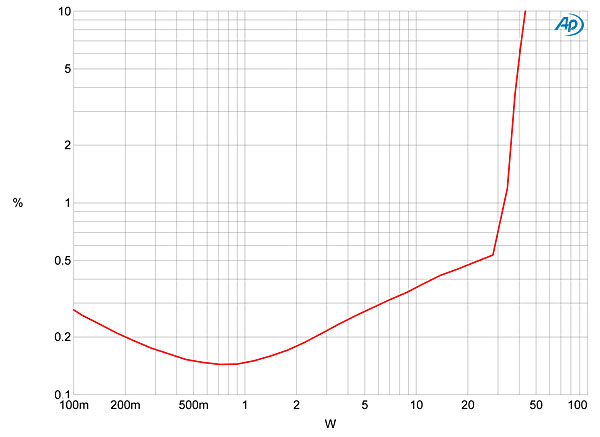



These graphs also indicate that the PrimaLuna amplifier doesn't offer the lowest distortion, though it remains between 0.1 and 0.2% at modest power levels. Figs. 9 and 10, taken at a level of 4V, which is when the THD rises above the noise floor, reveal that the lowest mid-frequency distortion was obtained when the 4 ohm tap was used to drive 8 ohms, and was lower in the right channel than the left. However, the distortion rises at the frequency extremes, particularly in the top audio octave, and as the load impedance drops. These graphs suggest that the 4 ohm tap is best used with loudspeakers whose impedance ranges from 4 to 16 ohms, as long as this tap can provide sufficient gain.
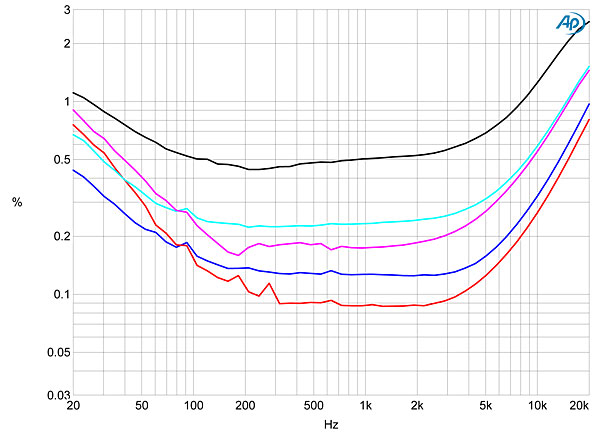

Fortunately, the distortion is heavily second-harmonic in nature in both modes (fig.11), even at low frequencies (fig.12). Peculiarly, in this graph the low-frequency noise floor is higher in the right channel than in the left. Despite its reduced linearity at high frequencies, the DiaLogue Premium HP performed relatively well on the demanding high-frequency intermodulation test, with the 1kHz difference component at an output power of 10W into 8 ohms typically lying at around –60dB (0.1%, fig.13).
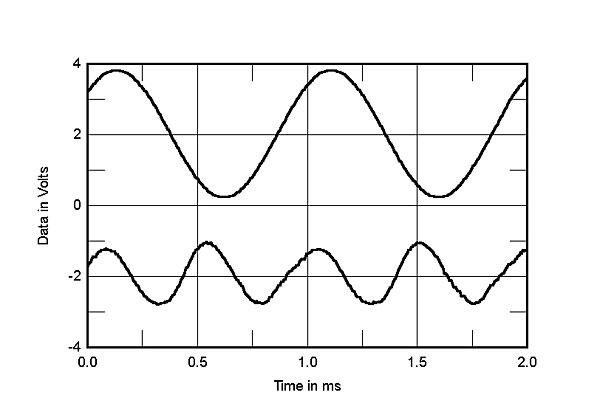


Overall, the PrimaLuna DiaLogue Premium HP measures well for a design using push-pull pairs of EL34 tubes.—John Atkinson

I just picked up one of these HP's and it is astounding. Unbelievable how much I love it, and beautiful to just look at.

Mine is a couple of months old and broken in. I have heard plenty of big buck amps/systems and the HP delivers a surprising amount of performance for the money.
If you like the EL34 sound, consider the GL KT77. A subtle bit more of the nice mids/highs along with increased bass definition. Also seems to react well to a decent power cord.
If I ever get the bug for that extra bit of performance, I will get the Dialogue Premium preamp. And If I see a used HP a few years from now at a great price, bridge it for a mono setup?

I am using a couple of Pangea's on some source components but would love to pick up one for the HP.

The Pangea cords get great reviews relative to their cost. And that's excluding the cheesy testimonials in the catalogs. The new AC9 with the Cardas wire may be a good buy?
Only by way of convenience, did I find the dubious Mapleshade power cord an improvement to the already fine HP.
Easily noticeable change in more realistic sounding bass and "the veil" lifted over the entire sonic spectrum. Even the S.O. noticed. If she can tell, then I'm on to something. This was the finding after also trying a Signal Cable(Magic Power Cord)budget model. I didn't notice any difference from the stock factory cord.
A recent call to Mapleshade confirmed it is no longer available only because of a new model coming out soon. I just may check it out.
The power cord came with a modded CD deck purchased years ago. Because of its fragile nature,I replaced it WITH a Pangea AC14SE and did notice a subtle downgrade in overall sonics. Since my primary source is a table, I left it there.
As with ANY cable, YMMV

I just went and swapped out the stock power cable on my PrimaLuna HP with a Pangea AC14SE (running from the HP straight to the power outlet on the wall) that I was using on my OPPO BDP-95. Will fire it up shortly here and am curious if I will notice a difference.


Is the HP significantly better sounding? I am looking to purchase and hook up with Goldenear Triton Twos or Threes. Add Rega RP6 w/exact cart and Oppo BDP-105. Any ideas on int amp - speaker combos?? Trying my absolute best not to go over $10k ;-)